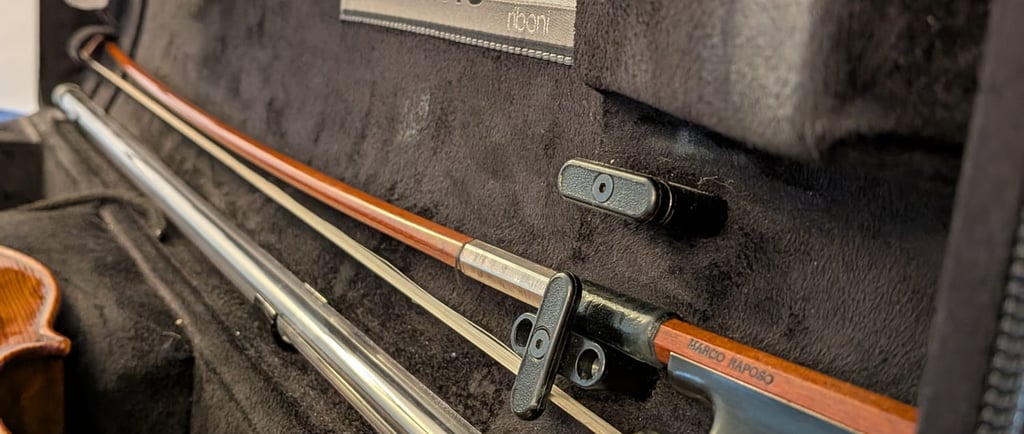How to care for your violin and bow
Some help tips to ensure your violin and bow last as long as possible and give you the best playing experience.
10/31/20252 min read


Whether you’ve just started playing or have been practicing for years, taking care of your violin is one of the best things you can do for your playing experience and sound and playing. A well-looked-after instrument stays in tune better, lasts longer, and makes playing feel smoother. Here are some simple and important tips to help you care for your violin and bow.
The Bow
1. Loosen the Bow After Playing
Always loosen the bow hair when you finish playing. Turn the screw at the end anti-clockwise until there’s no tension left on the stick. Leaving the bow tight all the time can cause it to bend out of shape, which is called warping. Loosening it keeps the bow straight and healthy.
2. Secure the Bow Properly in the Case
When you put your bow away, make sure the hair is facing down and that it’s clipped securely into place. This keeps it from moving around and possibly hitting your violin while the case is closed.
3. Don’t Touch the Hair
Avoid touching the bow hair with your hands. The natural oils from your skin make the hair greasy, and that can stop it from gripping the strings properly. If the bow hair looks dark or dirty, that’s usually a sign it has been touched too much and needs to be re-haired.
4. Use Rosin Sparingly
Rosin helps the bow grip the strings to make sound, but too much can cause problems. A light coating is enough. If you use too much, it can make your sound scratchy and leave dust on your violin. Occasionally, wipe the stick of the bow with a soft microfiber cloth to remove rosin build-up and protect the varnish.
The Violin
1. Take Off the Shoulder Rest Before Storing
When you put your violin in its case, always remove the shoulder rest. This allows the violin to lie flat and be properly secured inside the case.
2. Protect the Bridge
The bridge of the violin is delicate and carefully positioned. Never place the violin face down on any surface, as this could move or damage the bridge. Even a small shift can affect the sound and playability.
3. Handle the Violin Carefully
Try to hold the violin by the neck and chinrest area. Avoid touching too much of the body, as fingerprints and oils from your hands can mark the varnish. If you notice any marks or rosin dust on the instrument, gently wipe it off with a microfiber cloth.
4. Watch Out for Heat and Sunlight
Violins are made of wood and can react strongly to changes in temperature and humidity. Keep your violin away from radiators, direct sunlight, or very hot cars. Big changes in temperate can cause your violin to go out of tune and in severe cases can cause the wood to expand and/or crack.
5. Handle and Carry It Safely
Even though violin cases are protective, they are not indestructible. Always make sure your violin is properly secured in the case before closing it, and be careful not to drop or bump it.
Regular Maintenance
Make it a habit to wipe down your violin strings and the area directly underneath them after each practice session. This keeps the rosin dust from building up and protects the varnish over time. A few seconds of care every day can make a big difference in how your violin looks and sounds.
Caring for your violin isn’t complicated—it just takes a little attention and consistency. Treat your instrument carefully, and it will reward you with a beautiful tone for years to come.
Watch the full video
Subscribe and check out my other videos too!

Contact
© 2025. All rights reserved.